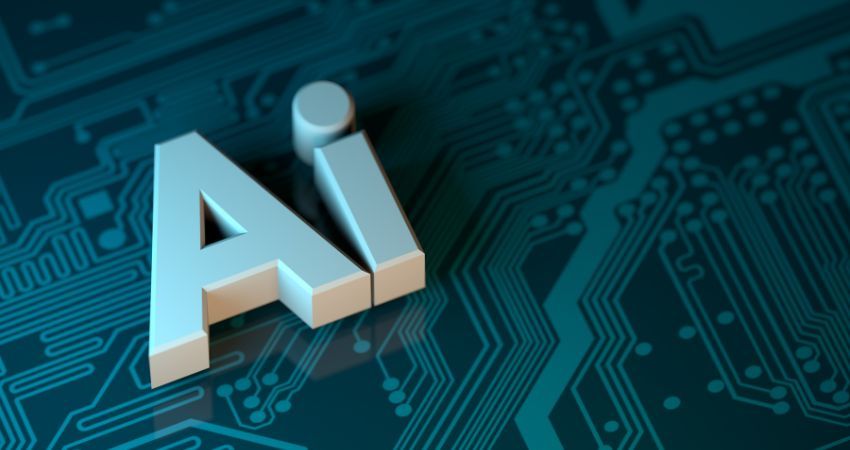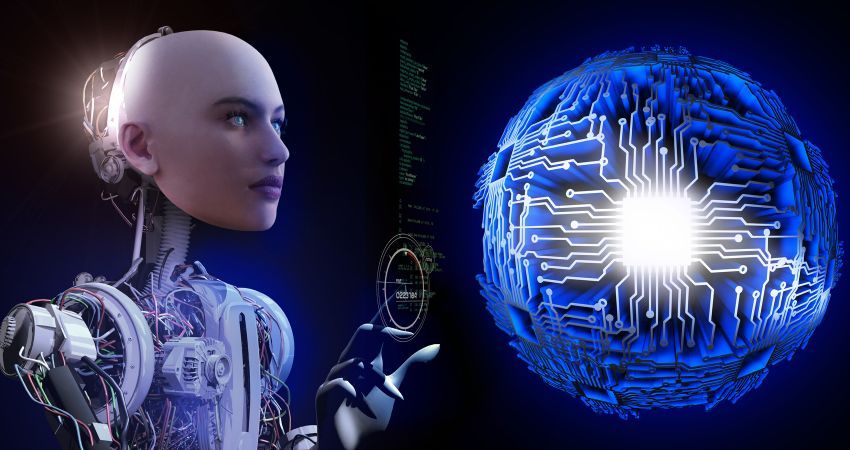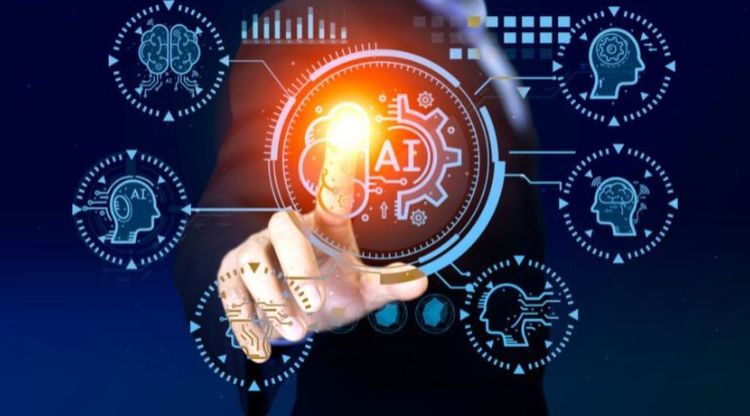Nowadays, Artificial Intelligence (AI) has stood out as a transformative force in several sectors, arousing curiosity among those who have not yet deeply explored this field.
For the uninitiated, the question “What is Artificial Intelligence?” is a common starting point.
In essence, AI refers to the ability of machines and computer systems to perform tasks that would traditionally require human intelligence. Understand more about this issue below.
The vast spectrum of activities addressed by AI includes learning, reasoning, sensory perception, speech recognition, decision-making, and natural language understanding.
The core of AI lies in creating systems capable of performing functions autonomously and adapting their behavior based on previous experiences.
I decided to create this comprehensive guide and not limit it to concepts, but delve into the various applications of AI, from virtual assistants and data analysis to content creation, photo and video editing, and medical diagnosis.
Each application is accompanied by examples of specific platforms and services.
When discussing how to use artificial intelligence, the importance of clearly defining objectives, collecting and preparing data, model training, and continuous monitoring is emphasized to ensure effectiveness and relevance over time.
Ethics and understanding legal implications are also highlighted as crucial elements.
In a world where artificial intelligence becomes increasingly present, understanding its concepts, applications and impacts is essential to fully take advantage of the benefits that this innovative technology offers.
What is artificial intelligence?

Many people who don't know about the subject wonder what Artificial Intelligence is.
An AI refers to the ability of a machine or computing system to perform tasks that would normally require human intelligence.
These tasks include learning, reasoning, sensory perception, speech recognition, decision making, and natural language understanding.
The goal of artificial intelligence is to create systems that can perform autonomous functions and adapt their behavior based on previous experience.
There are two main forms of AI: weak (or narrow) AI and strong (or general) AI.
- Weak (Narrow) AI: Refers to systems that are designed and trained to perform specific tasks without possessing the breadth of human cognitive abilities. Examples include voice recognition, chatbots and self-driving cars.
- Strong AI (General): Represents the idea of artificial intelligence that has the ability to understand, learn and apply knowledge in any domain, just like a human being.
Common AI implementation methods include machine learning algorithms, artificial neural networks, fuzzy logic, and optimization algorithms.
Artificial intelligence has applications in a wide variety of sectors such as healthcare, finance, automotive, education, entertainment and many others.
How does an AI work?
Knowing how an AI works can vary depending on the type of approach or algorithm used.
However, I will give an overview of how many AIs work, especially those based on machine learning, which is one of the most common approaches.
Data collect
The first step involves collecting data relevant to the task the AI will be trained to perform. This data can include labeled examples for supervised learning tasks (such as classification or regression) or unlabeled data for unsupervised learning tasks.
Data Preprocessing
Collected data typically goes through pre-processing steps to ensure it is in a format suitable for analysis. This may include normalization, noise removal, and handling of missing data.
Model Choice
A machine learning model is selected based on the nature of the task. Common models include neural networks, support vector machines, decision trees, among others.
Model Training
The model is trained using the collected data. During training, the algorithm adjusts its internal parameters to minimize the difference between the model's predictions and the actual labels from the training data.
Validation and Adjustment
After training, the model is validated using additional datasets that were not used during training. This helps ensure that the model generalizes well to unseen data.
If necessary, model parameters can be adjusted to improve performance.
Inference or Prediction
After training and validation, the model is used to perform inferences or predictions on new data. This is what allows the AI to perform the task it was trained to do.
Feedback and Continuous Improvement
Many AI systems incorporate feedback mechanisms to continually improve. This may involve reevaluating the model with new data, adjusting model parameters, or even incorporating new techniques and algorithms.
It's important to note that this is a general outline and that different types of AI may take different approaches.
Furthermore, the field of AI is constantly evolving, with researchers exploring new techniques and methods to improve the performance and effectiveness of artificial intelligence systems.
How to do artificial intelligence?

Knowing how to do artificial intelligence using a specific platform may vary depending on the platform chosen.
Below I will provide an overview of the AI creation process using one of the best AI generators, the You AI.
Be sure to consult the specific documentation for the platform you are using for detailed instructions. We will use artificial intelligence called You AI to carry out:
Registration and Access to the Platform
- Create an account on the platform if necessary.
- Get access to AI development resources.
Choosing the Development Environment
- Identify whether the platform offers an integrated environment for AI development or whether you will need to use external tools.
Understand Available Resources
- Explore platform features such as machine learning libraries, pre-trained models, and development tools.
Data Acquisition and Preparation
- Acquire the data you need to train and test your model.
- Prepare data as per platform requirements.
Choose or Create a Template
- Select an AI model appropriate for your problem.
- Some platforms may offer pre-trained models that you can tweak for your needs.
Model Training
- Use the platform's features to train your model with the prepared data.
- Adjust model parameters as needed.
Model Assessment
- Evaluate model performance using relevant metrics.
- Make sure the model meets accuracy and generalization requirements.
Model Integration
- Implement the trained model in your application or system using the tools provided by the platform.
- Test the integration to ensure the template works as expected.
Optimization and Improvements
- Tune the model and its parameters to optimize performance.
- Consider regular updates with new data to improve accuracy.
Continuous Monitoring
- Establish a monitoring system to track model performance in production.
- Make adjustments as needed to maintain effectiveness over time.
Nowadays, you can even create, through You AI, an AI for a teacher that helps teachers prepare and correct exercises and student tests, create a study plan and several other functions.
One of the AIs that perform these activities is Almanack AI.
Who created artificial intelligence?
The field of artificial intelligence (AI) has evolved over time with contributions from various researchers and scientists.
The term "artificial intelligence" was coined by John McCarthy, a computer scientist, during the Dartmouth Conference in 1956. McCarthy is often considered one of the pioneers of AI.
However, it is important to note that the development of AI has involved the work of many other researchers over the years. Significant contributions were made by people such as Alan Turing, Claude Shannon, Marvin Minsky, Herbert Simon, and many others.
AI is a multidisciplinary field that encompasses diverse aspects of computer science, mathematics, neuroscience, and other disciplines.
Thus, the development of AI is the result of collaborations and gradual advances made by many researchers around the world.
It is worth mentioning that one of the best-known artificial intelligences is ChatGPT, learn more about him.
How did artificial intelligence emerge?
The history or how artificial intelligence (AI) emerged goes back to ideas and concepts that began to be developed throughout the 20th century. Here is an overview of the most important milestones:
1940s-1950s: Theoretical foundations and first computers
During World War II, scientists began exploring ideas about how to create machines that could simulate human thought.
Alan Turing developed the Turing Machine, a fundamental concept in computing theory that influenced the development of computers.
1950s: Term "Artificial Intelligence"
As previously mentioned, the term "artificial intelligence" was coined at a Dartmouth conference in 1956, where researchers met to discuss how machines could be programmed to imitate human intelligence.
1960s: Logic and Problem Solving
Research focused on logical programming and problem solving.
The "ELIZA" program, developed by Joseph Weizenbaum in 1966, simulates a therapeutic conversation and is considered one of the first natural language processing programs.
1970s: Neural Networks and Expert Systems
Interest in artificial neural networks has grown but waned due to technical and performance challenges.
Expert systems, which use knowledge rules for decision making, have gained popularity.
1980s-1990s: Development of Practical Applications
Expert systems applied to fields such as medicine and finance emerged.
There have been advances in machine learning algorithms, including neural networks.
Symbolic and sub-symbolic AI have coexisted, with the development of more data-driven approaches.
2000s onwards: Deep Learning and Technological Advances
Deep learning, a form of deep neural networks, has gained prominence due to increasing computational power and the availability of large data sets.
Technologies such as speech recognition, computer vision, and natural language processing have advanced significantly.
Advances in hardware, such as graphics processing units (GPUs), have contributed to rapid progress in the ability to train complex AI models.
The evolution of artificial intelligence is characterized by theoretical advances, paradigm shifts, development of algorithms and the constant increase in computational power, which has allowed the performance of increasingly complex tasks.
Currently, the File conversion AI's are being used by millions of people around the world, check out what they are too!
What are the functions of AI?

Artificial intelligence (AI) performs diverse functions in a variety of areas. Here are some of the main functions of AI:
Conversational AI
- Virtual assistants, chatbots and automated customer service systems like Drift AI.
Data analysis
- Identifying patterns, trends and insights in large data sets such as Laion.
Natural Language Processing (NLP)
- Machine Translation: Translating text between languages such as Smodin;
- Sentiment Analysis: Assessment of the sentiment expressed in texts such as Shulex Copilot.
Avatar video creation
- Create avatar videos 100% online with HeyGen.
Photo and video editing
- Edit your photos with Epik AI;
- Video editing can be done with the Azure AI Video Indexer.
Presentation creation
- As Visme, completely change the way you create presentations.
Image generation
- As GenCraft, generate stunning images in a few seconds and without copyright!
Audio editing for podcast
- O Adobe Podcast was created for you who dream of having or already have a Podcast that needs improvements and improvements in the audio.
Content Generation
- Automatic creation of texts for websites and blogs such as Hypotenuse AI.
- These are just a few of the many applications of AI, and the technology continues to evolve, expanding its reach and enhancing its capabilities.
Do you want to know more AI that creates or edits image, video and/or audio? Check out!
How to use artificial intelligence?
Learning how to use artificial intelligence (AI) can be a powerful element in several personal and professional areas, from automating tasks with ClickUp AI to solving complex problems such as Programming AI like the JanitorAI.
Firstly, it is crucial to clearly define the desired objective, identifying which specific problem AI will help solve.
By outlining clear goals, you can select the best-suited AI approach and model for the task at hand.
A fundamental step is data collection and preparation. The quality and representativeness of the data used directly influence the effectiveness of the AI model.
After choosing the model, you need to train it with relevant datasets. During this phase, adjustments and optimizations are essential to ensure accurate and consistent performance.
Furthermore, it is important to highlight that successful AI implementation is not a static process.
Continuous monitoring of model performance and periodically updating with new data are best practices.
Finally, understanding the ethical and legal implications of AI is crucial to ensuring the responsible and transparent use of this innovative technology.
By following these tips, you can maximize the benefits of artificial intelligence in different contexts.
What is an artificial intelligence website for?
It's normal to wonder what an artificial intelligence website is for. However, know that it can have different purposes and applications, depending on its purpose and functionalities.
Below are some of the main purposes for which an artificial intelligence website can be developed:
- Virtual Assistance: Many websites incorporate chatbots or artificial intelligence-based virtual assistants to provide customer support, answer common questions, and guide users through processes.
- Personalization: Websites can use machine learning algorithms to analyze user behavior and personalize the user experience by offering product recommendations, relevant content, and personalized suggestions.
- Natural Language Processing: Artificial intelligence can be used to understand and respond to natural language queries. This is particularly useful on search engines, virtual assistants or customer service.
- Image and Video Recognition: For websites that deal with images or videos, artificial intelligence can be employed to recognize objects, faces, patterns, etc. This is useful in applications such as security systems, e-commerce, among others.
- Data Analysis: Companies that deal with large volumes of data can use artificial intelligence to analyze and extract valuable insights. This may include market forecasting, trend analysis, and data-driven decision making.
- Task Automation: Artificial intelligence can be integrated into websites to automate repetitive tasks and improve operational efficiency. This is common in business processes, inventory management, customer service, etc.
- Machine Learning for Continuous Improvement: Some websites use artificial intelligence to learn from historical data and continually adjust their algorithms to improve accuracy and relevance over time.
- Diagnosis and Healthcare: In sectors such as healthcare, artificial intelligence can be employed to assist in medical diagnosis, clinical data analysis and personalization of treatments.
Generally speaking, an artificial intelligence website can be designed to improve efficiency, personalization, user interaction and data analysis capabilities, depending on the specific needs of the business or service in question.
What is the impact of artificial intelligence on the job market?
Artificial intelligence (AI) has brought several benefits to the job market. Here are 12 positive impacts:
Automation of Repetitive Tasks
AI can handle routine and repetitive tasks, freeing workers to focus on more creative and strategic activities.
Increased Operational Efficiency
AI-driven automation can improve the efficiency of business processes, reducing costs and increasing productivity.
Improved Decision Making
AI systems can analyze large volumes of data in real time, providing valuable insights to support more informed decision-making.
Development of New Products and Services
AI can inspire innovation by enabling the development of more advanced and personalized products and services.
Improvement in Quality of Work
By automating tasks susceptible to human error, AI contributes to improving the quality of work and reducing failures.
Increased Security
AI systems can be used to monitor and ensure safety in work environments, identifying potential threats or risks.
Enhanced Customer Service
Chatbots and AI-based customer service systems can provide quick and accurate responses, improving the customer experience.
Creating Jobs in AI-Related Sectors
The implementation of AI creates demand for professionals specialized in the development, maintenance and management of artificial intelligence systems.
Manual Workload Reduction
AI can automate time-consuming manual processes, relieving workers of repetitive tasks and allowing them to focus on more strategic activities.
Opportunities for Continuous Learning
The rapid evolution of AI encourages workers to seek continuous learning opportunities, promoting professional development.
Personalization of User Experiences
AI is used to personalize online experiences, such as product recommendations, based on a user's history and preferences.
Greater Business Competitiveness
Companies that effectively adopt and integrate AI often gain a competitive advantage by being more agile and able to quickly adapt to market changes.
These benefits highlight how artificial intelligence, when implemented ethically and thoughtfully, can bring substantial improvements to the workplace and drive progress across multiple industries.
As we delve into the intricate layers of Artificial Intelligence, it becomes clear that we are facing a vast and dynamic field, full of possibilities and challenges. The history of AI, from its beginnings to its most recent advances, reflects not only technological development, but also the global collaboration of inquisitive minds that sought to imitate and enhance human intelligence.
AI's range of applications, from simplifying everyday tasks to revolutionizing entire industries, underscores its significant impact.
However, it is crucial to adopt an ethical and reflective approach as we embark on this journey.
Responsible implementation of AI not only optimizes the benefits it can provide, but also mitigates potential ethical and social challenges.
As we contemplate the future of Artificial Intelligence, it is imperative to not only understand its complexities but also cultivate a mindset of continuous learning.
This is an endlessly evolving universe, and AI's ability to adapt and understand the nuances will shape how we navigate its ever-expanding frontiers.
Ultimately, it is the combination of responsible innovation, global collaboration and a holistic understanding that will enable Artificial Intelligence to unleash its full potential, shaping the technology landscape and redefining the future we are building.
I hope you understood even more about this Complete Guide that deals with Artificial Intelligence!
